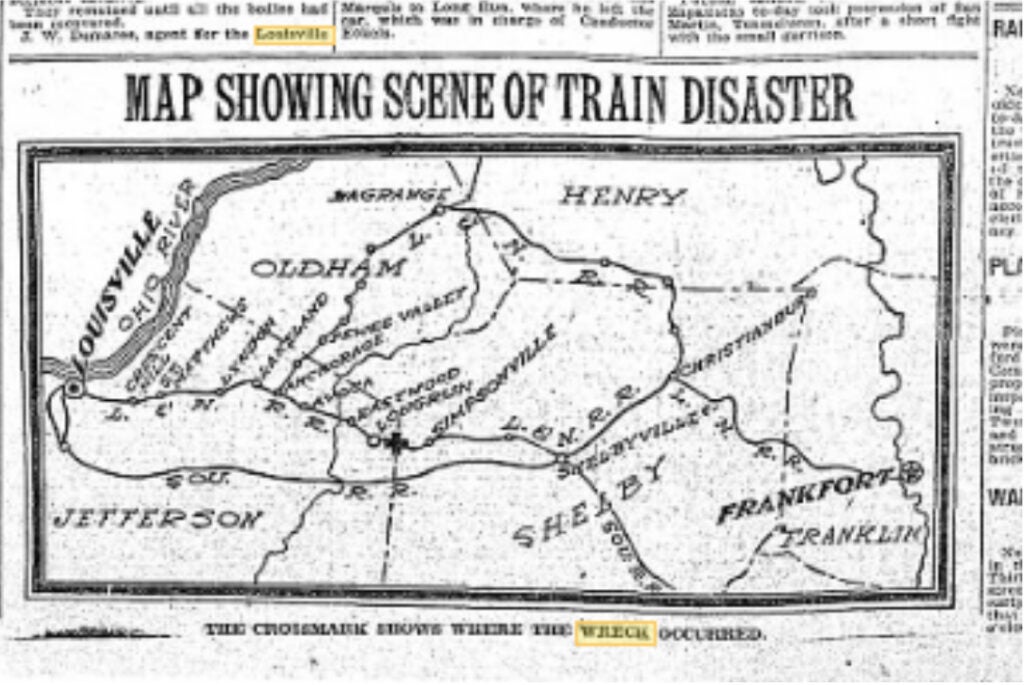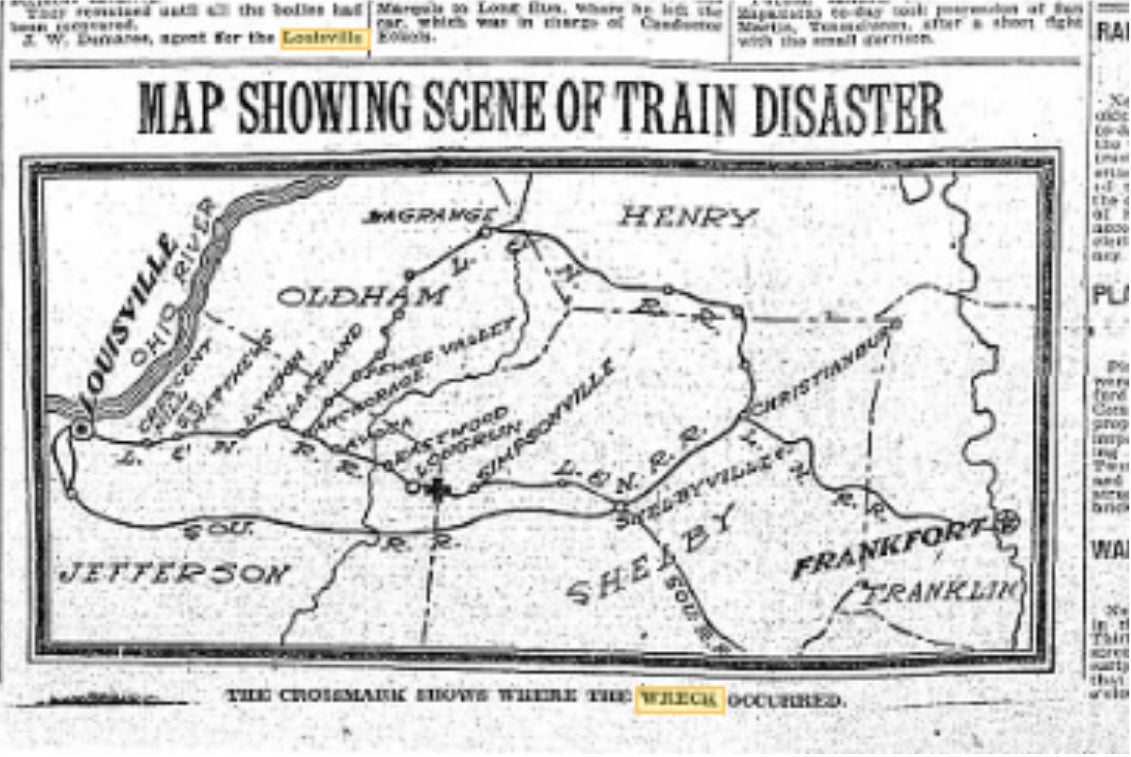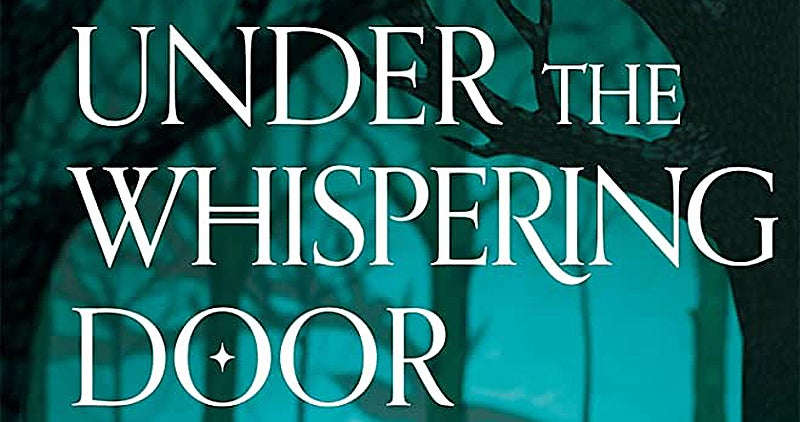The Chesapeake & Ohio Railway (C&O), from the time it started to run between Lexington, Kentucky, and Louisville, Kentucky, used track rights granted by the Louisville & Nashville Railroad (L&N). Thus, when operating between Lexington and Louisville, C&O trains had to conform to L&N rules of operation. C&O train crew members operating out of Lexington had to pass both a C&O and L&N rule book test. The Lexington to Louisville route from L&N’s Lexington Yard to HK Tower at Anchorage, Kentucky, was single track, with passing tracks at various locations.
On Jan. 16, 1912, the failure by a C&O crew to conform to L&N rules led to a disastrous head-on-crash between a C&O and L&N train at Long Run, located 1.25 miles east of Eastwood, Kentucky.
This head-on-crash involved L&N locomotive #288, pulling Train No. 15 from Lexington via Frankfort to Louisville, and C&O locomotive #128, hauling Train No. 92, Second Section (No. 92 Extra), from Louisville to Lexington.
L&N No. 15 was a passenger train of one baggage car, one combine car for Black passengers, and two coaches for White passengers that ran daily between Lexington and Louisville. On this day, W. W. Wilder was conductor; Jim L. Mahorney, engineer; and Thomas J. Jones, fireman. The train left Lexington at 3 p.m. with arrival in Louisville scheduled for 5:45 p.m. On its way, it stopped in Frankfort to pick up nine passengers. At 5:06 p.m., the train departed from Simpsonville, Kentucky, for Louisville with 70 passengers onboard.
C&O No. 92 was a freight run but, on this day, a second section had been added. The purpose of the second section was to haul a deadheading combine coach and a baggage coach from Louisville to Lexington. That morning the C&O passenger train from Ashland to Louisville was running seven hours late. In order to meet mail and express contract obligations, the C&O ran an abbreviated passenger train from Lexington to Louisville consisting of engine #128, a combine passenger car and a baggage car. For its return run to Lexington the train was carded as No. 92 Extra.
The C&O No. 92 Extra, with locomotive #128 leading, was under the charge of Conductor Fred. W. Anderson and operated by Engineer Charles O’Lee and Fireman Thomas Marquis. The train departed Louisville’s Central Depot at 4:35 p.m. Traveling at first over C&O track, she reached MN Tower and at 4:40 was allowed to enter the L&N line for Lexington. Train No. 92 Extra then ran to HK Tower where the Lexington Line split off of the Cincinnati route.

At 5:09 p.m. at HK Tower, C&O No. 92 Extra received orders from D. W. Renaker, the tower operator, stating that L&N No. 15 was running on time westbound and that the C&O No. 92 Extra was to take a siding in advance of L&N No. 15. The problem was there was no siding at HK Tower in which to hold C&O No. 92 Extra. If she was to be held at HK Tower, she would have to block one of the two mainline tracks between Cincinnati and Louisville. Thus, C&O No. 92 Extra was dispatched down the line to Lexington. To expedite train movement, sidings were to be taken by the inferior train, in this case C&O Train No. 92 Extra.
The conductor of the inferior train was responsible to take a siding that got them the farthest down the track, but which also got them in a siding in plenty of time for them to clear the mainline for the superior train, in this case L&N No. 15. In this situation based on L&N No. 15 holding to the timetable, there were three sidings C&O No. 92 Extra could have taken refuge in before a head-on collision with L&N No. 15 became a certainty. Yet, for some reason, Conductor Fred Anderson failed to order C&O No. 92 Extra’s Engineer O’Lee to take any of the three sidings. Conductor Anderson of C&O No.92 Extra had 12-years of train service with the C&O and Engineer O’Lee had 9 years of train service.
Based on L&N No. 15’s timetable running, C&O No. 92 Extra should have taken the siding at Eastwood. She could also have taken the siding at Long Run but this action would, in all probability, not have seen her clear of the mainline before L&N No 15 arrived at Long Run. As a result of No. 92 Extra running past all three of the sidings, two trains were traveling toward each other over a single track mainline. Thus, roughly a mile east of Long Run, L&N No 15 and the C&O No. 92 Extra collided with each other “in a deafening roar quickly followed by the noise of a boiler exploding.”
The official report states that the collision occurred at 5:20 p.m. on a three-degree 2,800-foot long curve. The greatest part of this curve was in a side hill cut. The view of the L&N engine crew was thus limited to 500 feet, while the view of the C&O engine crew was but 200 feet. The estimated speed of the trains at the time of collision was 45 miles per hour. Both engineers and firemen were killed, 15 people seriously injured, and 24 people received minor injuries.
State Senator Hermann D. Newcomb, who had boarded at Frankfort and was riding in the last car of the L&N train, reported that “the roar of the crash was followed by the loud explosion of the boiler of the engine, and a second later the noise of debris falling upon the top of the car. The car I was riding in was rocking and swaying from side to side and all the passengers were sprawled in the aisle or jammed under the seats.” The senator went on to say that, once he got outside the car, he could hear “the hiss of escaping steam and the faint cries of the injured. Around the two engines and the cars in front, which were piled into a great heap of wreckage, a bright flame lit up the wreck.”
Other passengers stated that the first warning they had was the shrieks of the whistles of the two locomotives, followed almost immediately by the collision. This collision resulted in all being thrown from their seats from which they suffered various cuts, bruises, and broken bones. Those riding in the two trains’ baggage and combine cars suffered the most serious injuries. In any case, those riding in these four cars were pinned within the wreckage. George L. Sehon, riding in the rear L&N car, reported that the collision threw him 15 feet and he landed on top of Representative Emmanuel Meyer. Representative Meyer, who had boarded at Frankfort, reported that those trying to assist the injured had trouble locating them due to the darkness and the near zero-degree weather.
The Shelby Record stated, “the cause of the accident was “bonehead” railroading, thoughtlessness, or forgetfulness on part of the C&O locomotive crew.” The paper went on to say, “Both trains were rounding a curve and were almost on each other before either engineer realized his peril. The grinding of the brakes and the scraping of the wheels as they slid along the sanded tracks told of the frantic efforts of the engineers to prevent the awful crash. No time was given to think of their personal safety.” The two locomotives reared into the air upon striking and the boiler of L&N locomotive #288 exploded, scattering tons of debris over the track. The C&O combine car and passenger car were telescoped and turned into a pile of splintered wood. On the L&N train, the baggage car and the combine car were demolished, and the two coaches were derailed.
Here it needs to be stated that an interurban line, the Louisville & Eastern Railroad (L&E) between Louisville and Shelbyville, ran from Long Run to Shelbyville on track adjacent to the L&N track. The L&E had a passenger/freight/substation at Eastwood and a passenger/freight depot at Long Run. Within a minute of the accident, an L&E freight motor bound for Louisville, with Conductor Bishop and Motorman Walker on board, arrived on the wreck scene. A few minutes later the L&E passenger car, operated by Motorman King and Conductor Echols, arrived at the scene. Both of these two L&E crews began to provide assistance to those trapped in the demolished cars. At the L&E Long Run Depot, Operator John Emery, upon hearing the explosion of No 288’s boiler, called the L&E offices in Louisville and Shelbyville to report a train collision on the L&N track. L&N, upon receiving a phone call from L&E, immediately dispatched a relief train and a wreck train from Louisville to the wreck site.
The explosion was heard throughout the area and soon a crowd of rescuers was at the scene. The injured, who could be freed, were loaded on to the L&E freight motor, which sped off to Louisville for medical assistance; however, a number of those injured had to be cut from the cars. W. T. Robinson, the L&N express messenger, was pinned in the baggage car for more than an hour. Conductor Anderson and Brakeman John Peake were pinned in the C&O combine car for almost two hours. Fortunately, none of the wooden cars caught fire, as fire was the great killer in train wrecks. Those cut free from the damaged cars were loaded onto the L&E passenger car and taken to Louisville for medical treatment. None of the dead or injured were from Frankfort.
On Jan. 21, 1912, Shelby County Coroner A. William Bullitt convened a Coroner’s Jury concerning the deaths of Charles O’Lee, Thomas Jones, Thomas Marquess and James L. Mahorney. Officials from both the L&N and C&O were brought before the jury to testify. The jury’s verdict was that Engineer O’Lee and Conductor Anderson of C&O No. 92 Extra were responsible for the “deaths of the trainmen by failure to observe the rules and regulations of the road, in not taking a siding to wait for L&N Train No. 15, which was running as a regular train.”










